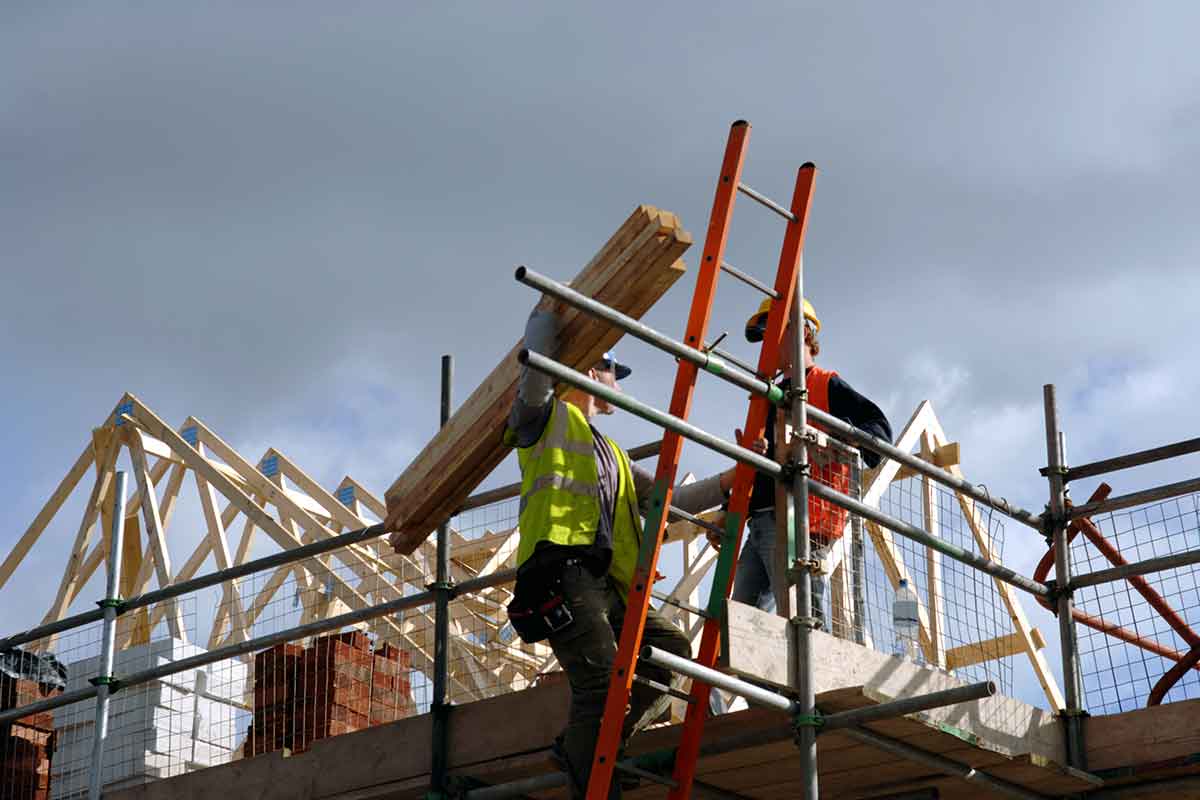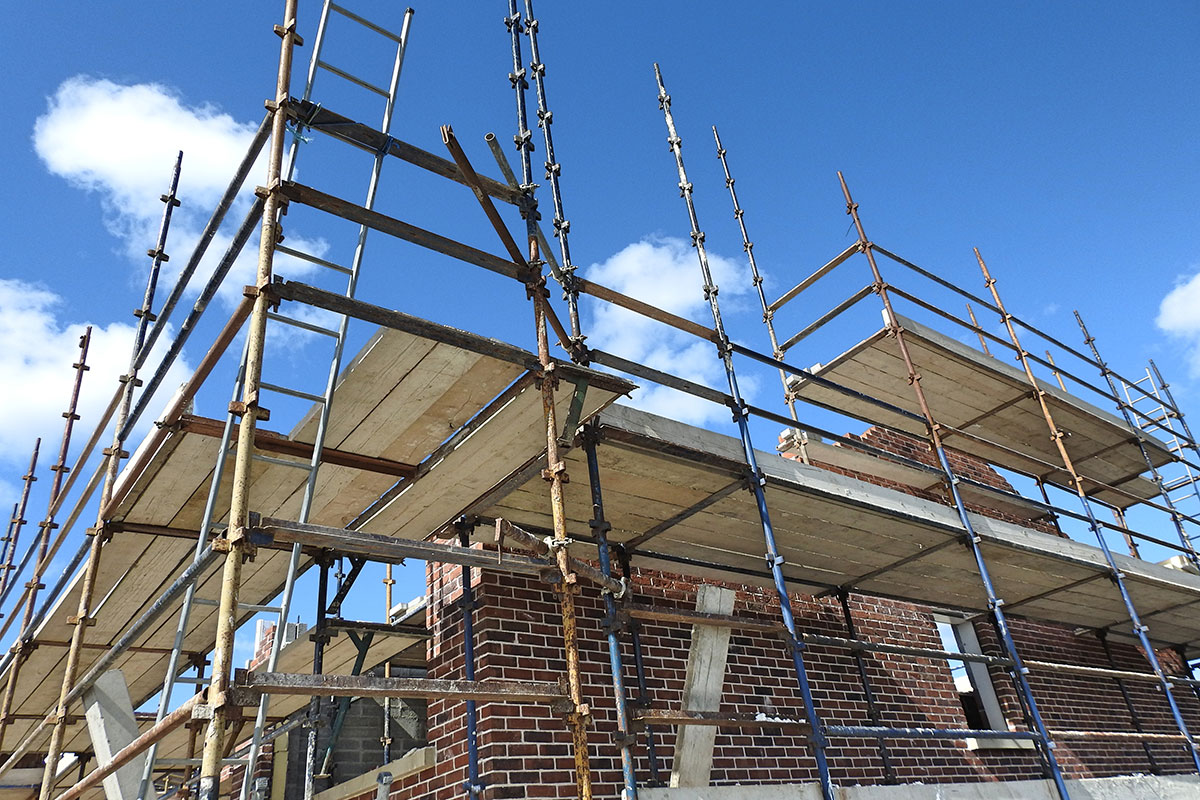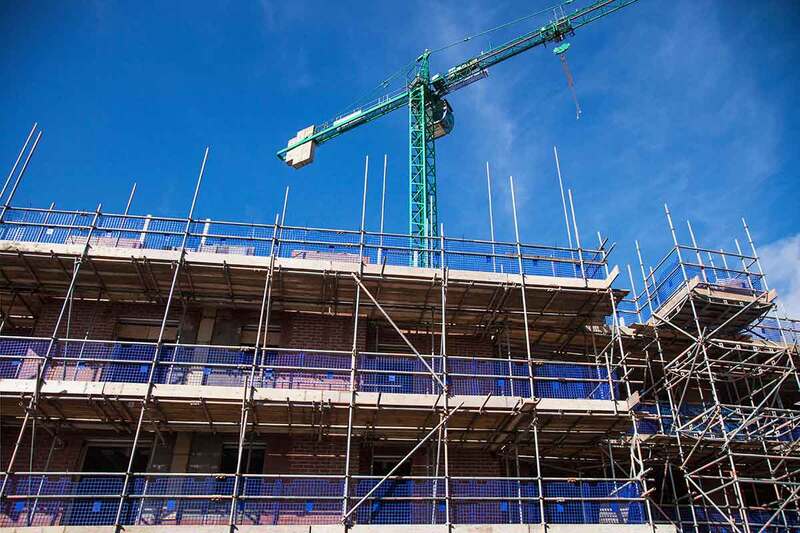The year in review: development
It has been a turbulent year for social housing development teams up and down the country, with many facing headwinds of supply chain shortages, escalating fire safety and net zero costs, and planning delays. Despite this, the sector has become more innovative in the way it funds housebuilding. Jack Simpson assesses the past 12 months
While the first coronavirus lockdown in 2020 resulted in construction sites up and down the country to close down, the lockdown at the start of 2021 saw development largely continue unscathed.
Nevertheless, the pauses in April and May last year did have an impact on housing associations and private developers’ output. You only have to look at some of the bigger developing associations to see how their numbers were affected, with many attributing this to the closures and other coronavirus-related issues.
But this only tells part of the story.
Site closures were not the only problem that landlords have been dealing with in the past 18 months. As the building safety crisis grew, so did the amount of money that associations needed to put towards remediation. Much of this essential spend was supplemented by funds previously earmarked for development.
Throughout the social housing sector there was significant downscaling of development pipelines. L&Q is probably the biggest example as it cut its 10,000-a-year target to just 3,000. There were others, too.
Add to this the net zero requirements, which Inside Housing has estimated could cost the sector £104bn, and development for the first time in many years played second fiddle.
Then add to that escalating material price hikes and planning issues, and it is clear that development teams have been under pressure. At the end of last year, Inside Housing reported on how planning delays were hitting development plans across the country, with some leaving housing associations unsure if they will hit grant funding deadlines set by Homes England.
What did this all mean in terms of numbers? In official government figures outlining the amount of net new homes, it recorded an 11% drop in the number of total homes added compared with the year before. For affordable housing starts, the figures were even more bleak, with a 16% year-on-year drop.
However it should be pointed out that while housing association development has decreased, despite all of the headwinds, councils delivered 6,873 affordable homes last year – the second highest amount since 1991-92. This was no doubt driven by a greater focus from councils on building social rent homes and the Housing Revenue Account cap being lifted two years ago.
But with fire safety costs and net zero requirements all weighing heavy on associations, it has left the development market open for innovation.
We saw the first of the these innovative partnerships with Hyde and M&G earlier in the year, with others following afterwards.
The deal between the 60,000-home landlord and the major global investment firm will see the latter give Hyde £500m to build 2,000 shared ownership homes. The landlord will then take over the management of the properties after they have been completed.
The arrangement means that housing associations do not have to find their own development capital to build these homes and will still have management of them once delivered.
Straight after the deal, advisors in the sector predicted that more would be coming down the line. We saw this most recently with Optivo signing a £106.5m deal with Sage Housing for a similar arrangement, which will see the Blackstone-owned for-profit provider funding the landlord’s development of 420 new homes.
Elsewhere, it was an important year for different government grant programmes. April was the time that the government’s £11.8bn Affordable Homes Programme was earmarked to start, with bidding open for the first time to councils and for-profit housing providers.
While no councils were successful on bidding for the Homes England pot, which is for development outside of London, several for-profit associations did successfully bid. Sage, L&G Affordable Homes and Vistry Partnerships all secured money through the programme.
In total, there were 31 providers that were picked as part of the Homes England tranche of funding, with the organisations each getting a share of the £5.2bn pot and pledging to start more than 90,000 homes outside of London.
However, there were some high-profile absences, such as L&Q, the sector’s current biggest builder. You can see a full breakdown here.
In the £4bn pot given to the Greater London Authority to distribute to providers, councils played a much more central part. There were more than 25 new providers on the list, with many of those being London boroughs with huge development plans. These include Barking and Dagenham, which received £171m to start 1,757 homes in the next five years, and Enfield, which was given £166m for 1,119 home starts.
In terms of housing associations, Hyde and Clarion were the biggest providers on the list, receiving a combined total of £364m to start more than 3,500 new homes. A full breakdown can be found here.
It was not just the grant programmes that were launched in 2021 which could result in more homes being built. After a two-year wait, the end of the year saw the £3bn Affordable Homes Guarantee Scheme launch and take on its first lenders. B3 Living, Vivid and Watford Community Housing were the first landlords to benefit from the government-backed scheme, securing bonds worth a combined value of £350m at low coupon rates.
Major stories of 2021
News
Development plans stall nationwide as planning delays hit ‘critical point’
Social landlords face delays from unprecedented construction material shortages
Housing associations increasingly looking to partner with for-profits to develop new homes
Housing association spend on development 30% below forecasts in first quarter
Features
The housing association that’s doubling the proportion of accessible homes it builds
Meet L&Q’s chief executive: ‘We will still build. But the emphasis is on existing residents’
What to look out for this year
The issues that plagued social housing development last year will not vanish in 2022. A number of housing associations have already pledged tens of millions over the coming years to fix fire safety faults, and that money will once again likely come from development war chests.
With net zero costs expected to far exceed the fire safety bills faced by landlords, this will be another expense finance teams will have to think about. Material costs appear to be going in only one direction and this will hike up how much a home will cost to build, and predictably result in less homes being built.
It is hard not predict that the government will once again be far away from its 300,000-a-year target. Expect the sector to lean further on private money to fund development plans. This will be through increased borrowing as the interest rate stays relatively low, or through the new deals such as the ones Optivo and Hyde have agreed with investors.
Councils will continue to build higher numbers than ever before, particularly in London, where grant has been channelled towards them. This will likely see higher numbers of social rent homes than we have seen in national figures in recent years. Also expect housing associations to deliver fewer homes for private sale.
The cross-subsidy model has come under pressure in recent years, particularly in London, and there has already been noise from housing associations, including Notting Hill Genesis which has built large numbers of these type of homes in the past, that they will be focusing more on affordable rent and social rent products.
It is also important to point out that landlords will need to get ready for the Building Safety Bill. While many in the sector are rightly skilling up for the introduction of building safety managers, a key part of the bill is to ensure that homes are built safely. This will include preparing for a whole new regime, where a regulator signs off buildings and more readily available documentation to be produced at every stage of a building’s lifecycle.
Sign up for our development and finance newsletter
Already have an account? Click here to manage your newsletters












